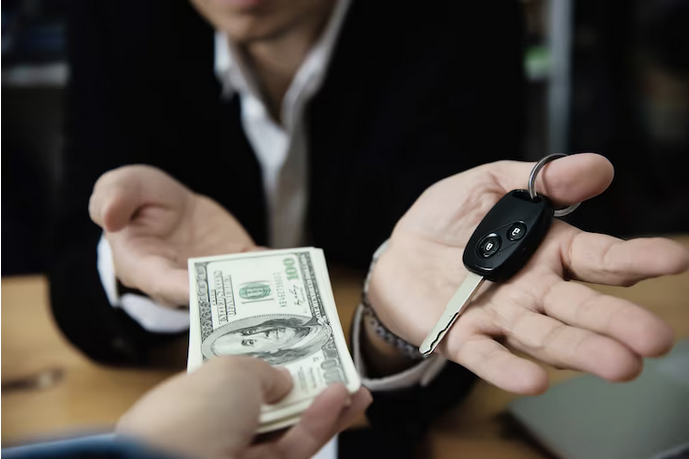If you have an old, beat-up car taking up space in your driveway or garage in California, you might be sitting on an unexpected source of cash. Selling a junk car, often referred to as a "clunker," can be a straightforward process, provided you know the necessary steps and considerations. This comprehensive guide will walk you through the process of selling a junk car in California, from evaluating its worth to completing the sale, without the need for any intermediary or middleman.
Assess the Condition of Your Junk Car
Before diving into the process of selling your clunker in California, the first step is to assess the condition of your vehicle realistically. Clunker cars vary greatly in terms of wear and tear, damage, and operability. Take a close look at your car and consider the following factors:
Mechanical Condition: Is the car running or non-operational? Are there any significant mechanical issues that would require costly repairs to make it roadworthy?
Body and Exterior: Assess the body of the vehicle. Is it heavily rusted, dented, or damaged? Are there missing parts, such as mirrors, lights, or bumpers?
Interior: Inspect the interior of the car. Check for any signs of damage, mold, or water intrusion. Are there functioning seats, electronics, and a clean interior?
Mileage: Consider the mileage on the car. Extremely high mileage can significantly affect its value.
Documentation: Ensure you have the title to the vehicle, as it is a crucial document for selling a car in California.
Determine the Value of Your Clunker
Once you've assessed the condition of your clunker, it's essential to determine its value. The value of a junk car is influenced by several factors, including its make, model, year, condition, and the current market for scrap metal. Here are some ways to estimate the value of your junk car:
Online Research: Start by researching online resources and websites that offer tools to estimate the value of your specific car based on its make, model, year, and condition. Websites like Kelley Blue Book, Edmunds, or the National Automobile Dealers Association (NADA) can be helpful.
Get Multiple Quotes: Contact local junkyards, scrap yards, and buyers in your area to get quotes for your clunker. Different buyers may offer varying prices, so obtaining multiple quotes can help you negotiate the best deal.
Consider the Scrap Value: If your clunker is non-operational or in extremely poor condition, it may be valued primarily for its scrap metal. In such cases, research the current scrap metal prices in your area to estimate its worth.
Prepare the Necessary Documents
Before you can sell your clunker in California, make sure you have the required documentation in order. The primary document you'll need is the vehicle's title. If you don't have the title or it's lost, you'll need to apply for a duplicate title through the California Department of Motor Vehicles (DMV).
Here are the key documents you'll need:
Vehicle Title: Ensure you have a clear and valid title to the vehicle in your name.
Bill of Sale: While not always necessary, a bill of sale can be helpful for documenting the sale of the car. It should include details such as the buyer's and seller's names, addresses, and the sale price.
Choose the Selling Option
In California, you have several options for selling your clunker. Depending on your preferences and the condition of your vehicle, you can choose one of the following methods:
Sell to a Junkyard or Scrap Yard: Junkyards and scrap yards are often willing to purchase clunkers for their scrap metal value. They may even provide free towing services. Contact local yards in California to inquire about their interest and offers.
Private Sale: If your clunker is still somewhat operational or has parts that are in demand, consider selling it privately. List your car on online platforms, local classified ads, or social media. Be transparent about the vehicle's condition to attract genuine buyers.
Cash for Cars Services: There are companies and services that specialize in buying junk cars for cash. These services can often provide a quick and convenient way to sell your clunker, and some may offer free towing as part of the deal.
Negotiate and Finalize the Sale
Once you've received offers for your clunker, don't be afraid to negotiate the price. Remember that the goal is to get the best possible deal for your vehicle. Be open to bargaining, but also be realistic about the condition of your clunker.
When you and the buyer have agreed on a price, make sure to finalize the sale correctly:
Sign over the title to the buyer, and ensure it's properly filled out with the necessary details.
Complete a bill of sale if required.
Get paid in the agreed-upon manner, whether it's cash, a cashier's check, or another secure method.
Provide any additional documentation or information requested by the buyer.
Notify the California DMV
After selling your clunker, it's essential to notify the California DMV to release yourself from future liability associated with the vehicle. You can do this by submitting a Notice of Transfer and Release of Liability form online or by mail. This step is crucial to prevent any issues or fines related to the vehicle after the sale.
Conclusion
Selling a junk car in California can be a practical way to free up space and earn some extra cash. By following these steps, you can navigate the process smoothly and get the best possible deal for your clunker. Remember to assess the condition, gather the necessary documents, determine the value, and choose the selling option that suits your needs.
Whether you opt for a junkyard, private sale, or a cash for cars service, conducting the sale in a transparent and organized manner will ensure a successful transaction. Cash in on your clunker and turn your old vehicle into a valuable asset while decluttering your space in California.





Comments